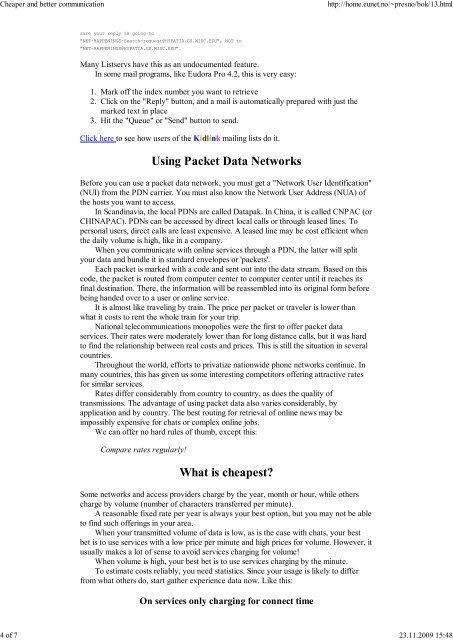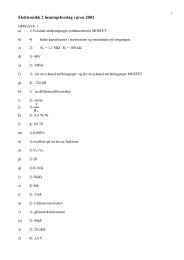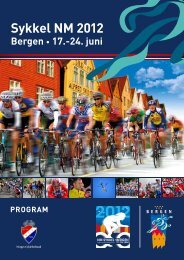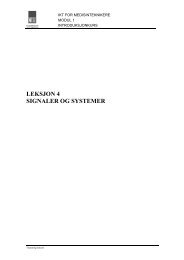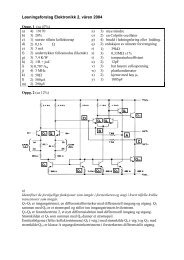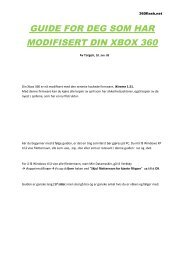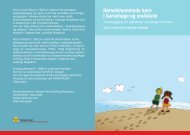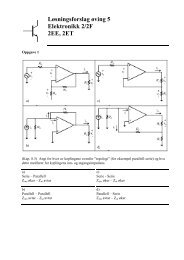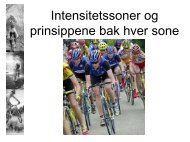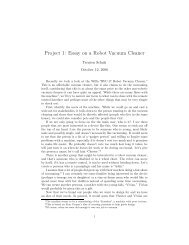The Online World resources handbook
The Online World resources handbook
The Online World resources handbook
You also want an ePaper? Increase the reach of your titles
YUMPU automatically turns print PDFs into web optimized ePapers that Google loves.
Cheaper and better communication http://home.eunet.no/~presno/bok/13.html<br />
sure your reply is going to<br />
"NET HAPPENINGS Search request@HYPATIA.CS.WISC.EDU", NOT to<br />
"NET HAPPENINGS@HYPATIA.CS.WISC.EDU".<br />
Many Listservs have this as an undocumented feature.<br />
In some mail programs, like Eudora Pro 4.2, this is very easy:<br />
1. Mark off the index number you want to retrieve<br />
2. Click on the "Reply" button, and a mail is automatically prepared with just the<br />
marked text in place<br />
3. Hit the "Queue" or "Send" button to send.<br />
Click here to see how users of the KidlinN mailing lists do it.<br />
Using Packet Data Networks<br />
Before you can use a packet data network, you must get a "Network User Identification"<br />
(NUI) from the PDN carrier. You must also know the Network User Address (NUA) of<br />
the hosts you want to access.<br />
In Scandinavia, the local PDNs are called Datapak. In China, it is called CNPAC (or<br />
CHINAPAC). PDNs can be accessed by direct local calls or through leased lines. To<br />
personal users, direct calls are least expensive. A leased line may be cost efficient when<br />
the daily volume is high, like in a company.<br />
When you communicate with online services through a PDN, the latter will split<br />
your data and bundle it in standard envelopes or 'packets'.<br />
Each packet is marked with a code and sent out into the data stream. Based on this<br />
code, the packet is routed from computer center to computer center until it reaches its<br />
final destination. <strong>The</strong>re, the information will be reassembled into its original form before<br />
being handed over to a user or online service.<br />
It is almost like traveling by train. <strong>The</strong> price per packet or traveler is lower than<br />
what it costs to rent the whole train for your trip.<br />
National telecommunications monopolies were the first to offer packet data<br />
services. <strong>The</strong>ir rates were moderately lower than for long distance calls, but it was hard<br />
to find the relationship between real costs and prices. This is still the situation in several<br />
countries.<br />
Throughout the world, efforts to privatize nationwide phone networks continue. In<br />
many countries, this has given us some interesting competitors offering attractive rates<br />
for similar services.<br />
Rates differ considerably from country to country, as does the quality of<br />
transmissions. <strong>The</strong> advantage of using packet data also varies considerably, by<br />
application and by country. <strong>The</strong> best routing for retrieval of online news may be<br />
impossibly expensive for chats or complex online jobs.<br />
We can offer no hard rules of thumb, except this:<br />
Compare rates regularly!<br />
What is cheapest?<br />
Some networks and access providers charge by the year, month or hour, while others<br />
charge by volume (number of characters transferred per minute).<br />
A reasonable fixed rate per year is always your best option, but you may not be able<br />
to find such offerings in your area.<br />
When your transmitted volume of data is low, as is the case with chats, your best<br />
bet is to use services with a low price per minute and high prices for volume. However, it<br />
usually makes a lot of sense to avoid services charging for volume!<br />
When volume is high, your best bet is to use services charging by the minute.<br />
To estimate costs reliably, you need statistics. Since your usage is likely to differ<br />
from what others do, start gather experience data now. Like this:<br />
On services only charging for connect time<br />
4 of 7 23.11.2009 15:48


